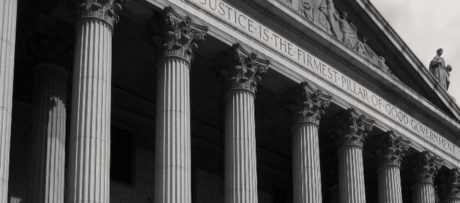In the good ol’ days (before the 90’s), Ontario had two separate courts which were responsible for handling matters relating to wills and estates: the Surrogate Court and the Superior Court. The Surrogate Court had strict jurisdiction to deal with probate matters, such as determining whether a will was valid. In contrast, questions about the interpretation (or “construction”) of a will that had already been declared valid by the Surrogate Court would be brought before the Superior Court.[1]
This dual-system changed when, in 1989, Ontario abolished the Surrogate Court[2] and its probate function was folded into the Superior Court. Today, judges sitting on the Ontario Superior Court of Justice are able to grant probate and interpret wills.[3]
Despite this merger, “it remains nevertheless important to keep the probate and construction functions analytically distinct.”[4] The practice and procedure on a probate application is very different from that followed on a construction application.[5] In particular, the rules governing the admissibility of evidence differ depending on whether a court is sitting as a “court of probate” or as a “court of construction.”[6]
Probate vs. Construction Proceedings
When the Superior Court acts as a court of probate, it has an “inquisitorial” role.[7] The court’s job is not to resolve any disputes between the parties, but to determine whether the will in question really is the deceased’s last will and testament.[8] The judge must undertake this inquisitorial function even if the probate application is unopposed or all parties involved agree to have the will probated.[9] This is because, when sitting as a court of probate, the judge has a special responsibility to the deceased who, rather self-evidently, cannot “give voice to his or her true intentions.”[10]
Questions pertaining to the validity of a will are generally focused on whether the will complied with technical drafting requirements set by the Succession Law Reform Act, whether the testator had capacity to make the will, and whether the testator knew and approved of the contents of the will when he or she signed it.[11]
In contrast, when the Superior Court acts as a court of construction, it is tasked with ascertaining the meaning of a will that has already been declared valid.[12] In other words, the court’s role is to interpret and thereby give effect to the intentions of the testator regarding the distribution of his or her estate.[13] The types of questions raised on interpretation applications are much more varied than questions about validity. For example, a question may be raised about whether the will’s dispositive terms actually relate to assets owned by the testator at the time of death, who are the members in a class of beneficiaries, or the nature and extent of discretionary decision-making powers given to estate trustees.[14]
Admissible Evidence
When the Superior Court sits as a court of probate, a broad range of evidence may be deemed admissible. The court may consider evidence about the circumstances surrounding the making of the will (e.g., what did the testator say in previous wills or in earlier drafts of the current will?)[15] as well as direct evidence as to the testator’s intentions,[16] which could include hearsay evidence (e.g., recollections of family members about the deceased’s estate plans or notes from the drafting solicitor about his or her discussions with the deceased).[17]
When the Superior Court sits as a court of construction, the rules regarding admissible evidence are much more constrained. While the court can consider evidence of the circumstances surrounding the making of the will, the court is generally prohibited from considering direct evidence of the testator’s intentions.[18] This is because the interpretation of a will is supposed to be based on the wording of the will itself, not the testator’s unexecuted plans.
There are few exceptions to this general rule prohibiting direct evidence of a testator’s intentions when interpreting a will. The primary exception is where there is an “equivocation” in the will (i.e., the language in the will could have two different meanings, neither of which is clearly preferable to the other). In that case, extrinsic evidence of the testator’s actual intention would help identify which of the two interpretations of the will is the correct reading.[19]
Probate and Construction Questions Should be Dealt With Separately
While the merger of the functions of the Surrogate Court into the Superior Court may have streamlined proceedings, questions of probate should still be dealt with separately from questions of construction. As discussed, the court’s role, responsibilities, and procedure is different depending on whether the judge is being asked to probate or interpret a will. Attempting to deal with both issues at once – the validity and interpretation of a will – may result in the judge taking into consideration evidence that would otherwise be inadmissible or emphasizing the court’s inquisitorial role when it is inappropriate to do so. The best practice is to keep questions of interpretation and probate separate.
[1] Albert H. Oosterhoff, “The Discrete Functions of Courts of Probate and Construction,” prepared for the Law Society of Upper Canada 19th Annual Estates and Trusts Summit – Day One (November 3, 2016), p. 2 [“Discrete Functions”].
[2] Balaz Estate v Balaz, [2009] OJ No 1573 (ON SC) at para. 9 [“Balaz Estate”], citing Court Reform Statute Law Amendment Act, S.O. 1989, c. 56, s. 48.
[3] Ibid.
[4] Panda Estate (Re), 2018 ONSC 6734 at para. 17 [“Panda Estate”].
[5] Ali Estate (Re), 2011 BCSC 537 at para. 44 [“Ali Estate”].
[7] Neuberger Estate v. York, 2016 ONCA 191 at para. 68 [“Neuberger Estate”].
[9] Orenchuk v. Dean, 2022 ONSC 4538 at para. 14 [“Orenchuk”].
[11] Ali Estate at para. 22; Panda Estate at para. 15.
[13] Robinson Estate v Robinson, 2011 ONCA 493 at para. 23 [“Robinson Estate”].
[14] Panda Estate at para. 16.
[15] Balaz Estate at para. 10.
[16] Panda Estate at para. 17.
[17] Oosterhoff, Discrete Functions, p. 12.

